One year ago, what is arguably Taiwan’s most beautiful cross-island highway reopened after a 13-year closure due to typhoon damage. During this time, three of Taiwan’s easier 100 Peaks were left inaccessible, except to those willing to sneak around checkpoints at night, hide from police patrols in the bush and summit these peaks illegally.
With the reopening of the road, the Southern Three Stars (南橫三星) are once again legally accessible. The logistics are slightly more complicated now as one section of the road is closed overnight, but this has not stopped throngs of hikers from making their way up here to make up for lost time, summiting three (or four) new 3,000-meter peaks over a weekend.
For non-hikers, just going along for the drive is a worthwhile trip, as the road passes through the majestic scenery of Yushan National Park on its way up to the highest road tunnel in Taiwan and down the other side.
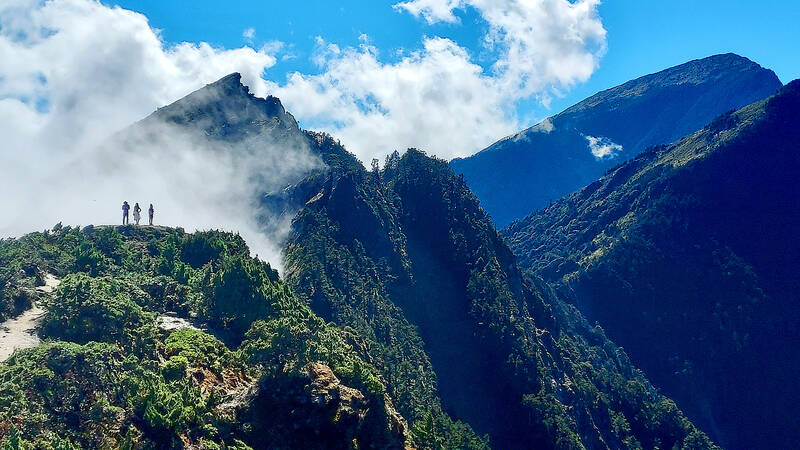
Photo: Tyler Cottenie
The Three Stars are on a restricted section of the road that runs from Meishankou (梅山口) in the west to Xiangyang (向陽) in the east. Cars may enter this section five days a week (not Tuesdays or Thursdays) between 7am and 2pm, but must exit from one of those checkpoints before 5pm.
For a westward journey through the Three Stars, enter from Xiangyang and continue up to the enormous landslides caused by Typhoon Morakot in 2009. Even in a country where sprayed concrete and other slope stabilization measures are ubiquitous, the extent of the repair work done here over the last decade is still awe-inspiring. Bare rock extends half a kilometer upward from the highway in places, and despite the obvious efforts to hold back the forces of nature here, one can’t help but wonder how long this road can survive.
GUANSHANLINGSHAN
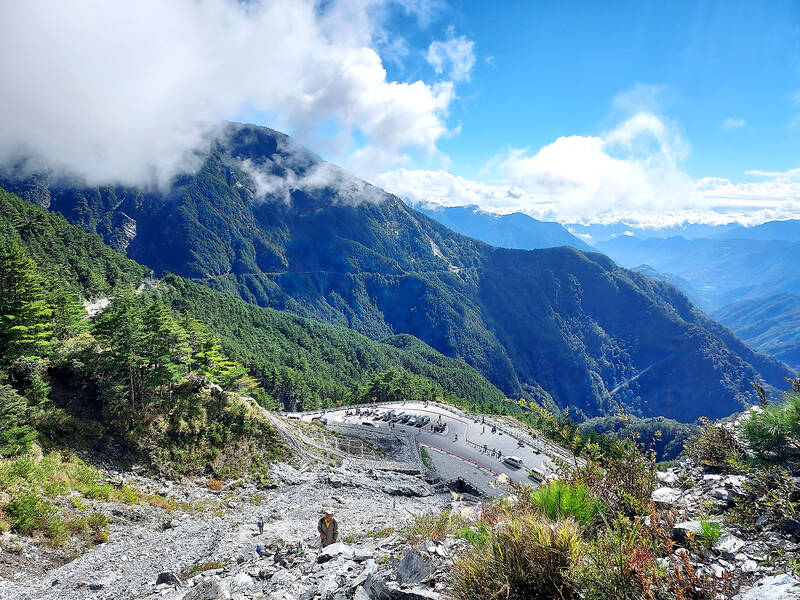
Photo: Tyler Cottenie
At the road’s highest point, the Daguanshan Tunnel (Taiwan’s highest road tunnel) cuts through the spine of the Central Mountain Range from Taitung County into Kaohsiung. The trailhead for the first of the Three Stars, Guanshanlingshan (關山嶺山), is right next to the east entrance of the tunnel. If you plan to drive yourself, it’s best to arrive early, as the parking lot here is rather small and there is nowhere else to park for several kilometers on either side.
The trail ascends steeply through scree for a time before reaching the Central Mountain Range spine above the tunnel. The trail to the peak makes a right turn here to follow the ridge upward, but look closely straight ahead and a hint of an old trail through the bamboo is still visible. This was the Japanese-era Guanshan Cross-Island Trail, one of many similar ones built in the early 20th century to try to control the indigenous population.
The rest of the trail to the peak is well marked and obvious, requiring about an hour and a half. On a weekend, expect a lot of people here celebrating their successful ascent, as this is the easiest and most popular of the Three Stars. If you can find a spot to sit down, the view here on a clear day is well worth taking in: farms along the highway are visible deep in the valley below, and there is often a beautiful sea of clouds on the Taitung side of the mountains.
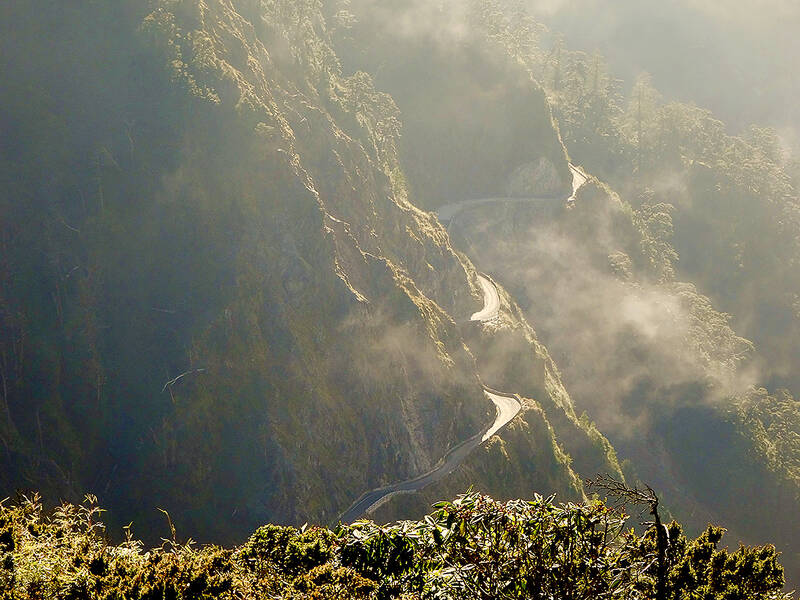
Photo: Tyler Cottenie
TAGUANSHAN
The middle peak of the Three Stars is the most impressive, in terms of both the trail and the view at the top. After passing through the Daguanshan Tunnel, continue to the trailhead at the 33.4K marker. If no roadside parking is left here, there is a bigger parking area 200 meters further down the road. For those planning to do Taguanshan (塔關山) after Guanshanlingshan on the same day, be mindful of the time before setting out, as the round trip takes three and a half to four hours for the average hiker; recall that everyone must exit via Meishankou or Xiangyang by 5pm.
In contrast to the completely exposed trail up Guanshanlingshan, this trail is entirely forested. Near the beginning, there are several large photogenic Taiwan hemlocks right next to the trail. A hemlock canopy and Yushan cane bamboo forest floor accompany hikers all the way to the peak, where the forest finally opens up on a breathtaking view. To the east, the mountain drops off in a sheer cliff, while a bare, broken rocky ridge continues to the south, rising up to the mighty Guanshan (關山).
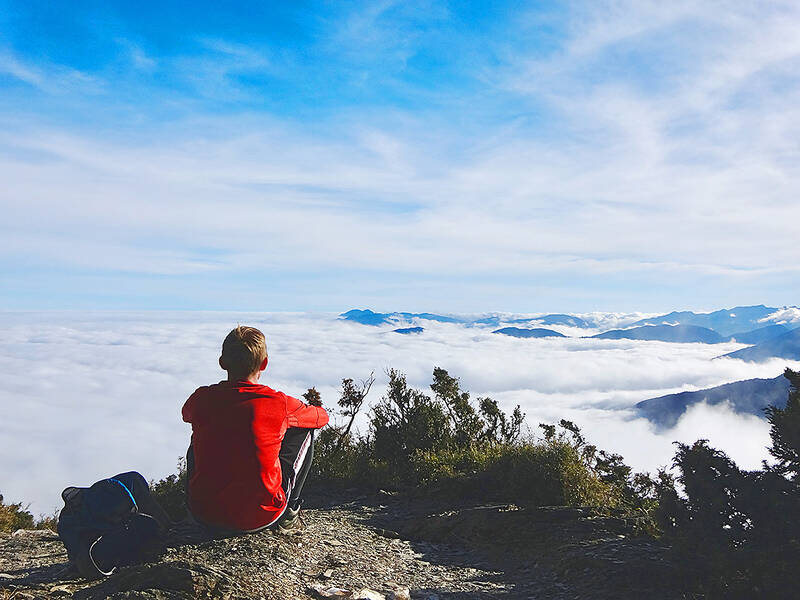
Photo: Tyler Cottenie
KUHANUOSINSHAN
Further west along the highway, the bridge at 28.3K marks the trailhead for the last of the Three Stars, Kuhanuosinshan (庫哈諾辛山). As the longest trail of the Three Stars with the least exciting view at the top, a day trip to this peak hardly deserves a glowing recommendation. If you are not trying to collect all of Taiwan’s 100 Peaks, you could do better things with your time. However, for those willing to spend two days in the area, it’s a different story altogether, as there are other features nearby that redeem this otherwise lackluster peak.
The trail initially climbs up a steep hill with a great many stairs. Thousands of them, in fact. If you have the physical and mental fortitude to get through this section, the trail finally levels out on the top of a ridge where a Yushan National Park cabin sits. With advance application, it is possible to stay here overnight. Spending a night here breaks the hike up in the middle and gives you time to physically (and mentally) recharge. The dark night sky and thin air here give overnight guests a stargazing experience unlike anything down in the city. And finally, the extra day allows for an ascent of nearby Guanshan, which towers half a kilometer over the Three Stars.
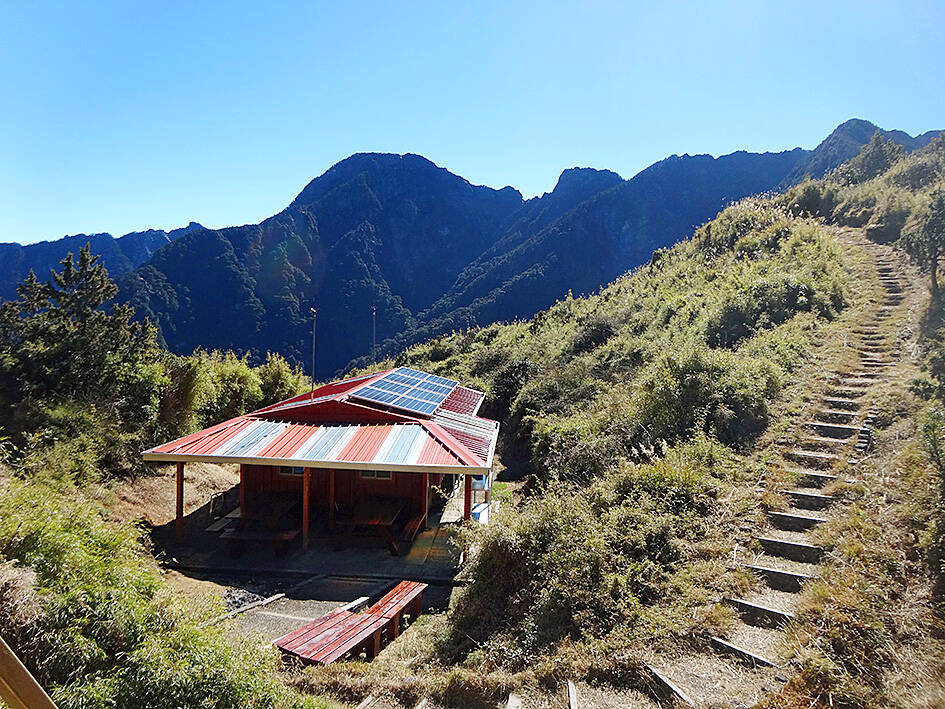
Photo: Tyler Cottenie
Just behind the cabin, there is a fork in the trail: the right one leads to Kuhanuosin Mountain, while the trail to the left leads to Guanshan. The former can be done on the first day in the afternoon, while the latter will take up most of the second day. The Guanshan trail is a mix of forest and open bamboo meadow, with an exciting rope climb up a vertical wall in the middle. Upon finally reaching the top (a wide, flat peak ideal for a picnic lunch) you are standing on the southern border of Yushan National Park and the entire park is within view. Return to the cabin to grab your overnight gear and you should make it down to the highway in time to clear out by the 5pm deadline.
LOGISTICS
Whether you have one, two, or even three days free, there is a Southern Three Stars itinerary that’s right for you. For overnight trips, it’s no longer possible to leave a vehicle at the trailhead after 5pm, so hiring a driver for drop-off on Day 1 and pickup on Day 2 is the only practical option. For single day trips, hiring a driver eliminates the hassle of finding parking, but going in your own car is also possible. Scooters are much easier to park, and are a much more engrossing way to experience the South-Cross Highway, so this option is highly recommended. Travel by bicycle and on foot is not permitted on this section of the highway.
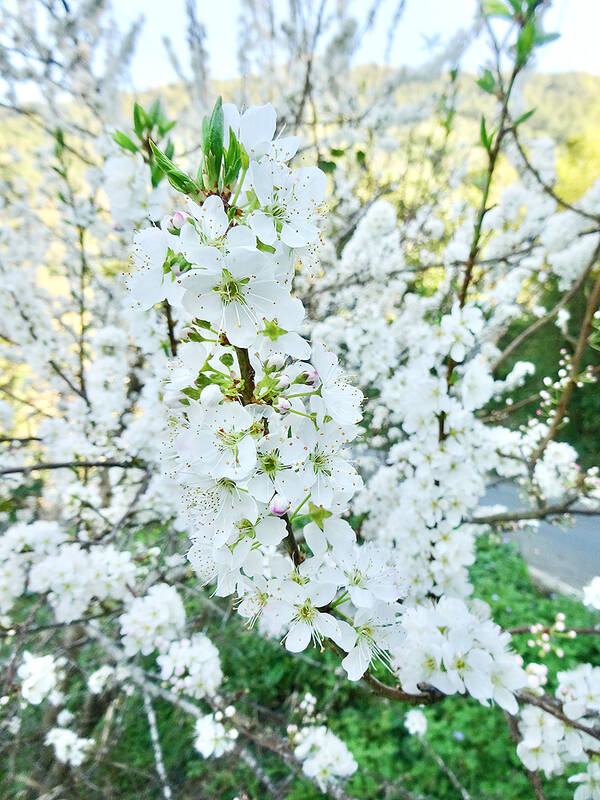
Photo: Tyler Cottenie
Police permits are required for all of these mountains, and can be booked online 5 days ahead of time (Chinese only: nv2.npa.gov.tw/NM107-604Client/) or any time in person at the Meishankou and Xiangyang police stations. A national park permit is required for Kuhanuosin and Guanshan, both for day trips and overnight stays (English: npm.cpami.gov.tw/en/apply_1.aspx). Guided package tours can be arranged with Blue Skies Adventures (www.blueskiestaiwan.com).
GUANSHANLINGSHA
Elevation: 3176m
Ascent: 450m
Round-trip time: 3 – 3.5 hrs
Trailhead: East side of Daguanshan Tunnel
Permits: Police
TAGUANSHAN
Elevation: 3222m
Ascent: 650m
Round-trip time: 3.5 – 4 hrs
Trailhead: 33.4K mark east of Meishankou
Permits: Police
KUHANUOSIN
Elevation: 3115m
Ascent: 950m round-trip
Round-trip time: 6.5 hrs to/from trailhead
Trailhead: 28.3K mark east of Meishankou
Permits: Police, National Park
GUANSHAN
Elevation: 3668m
Ascent: 650m
Round-trip time: 7.5 – 8 hrs to/from cabin
Trailhead: Kuhanuosin Cabin
Permits: Police, National Park

Aug. 25 to Aug. 31 Although Mr. Lin (林) had been married to his Japanese wife for a decade, their union was never legally recognized — and even their daughter was officially deemed illegitimate. During the first half of Japanese rule in Taiwan, only marriages between Japanese men and Taiwanese women were valid, unless the Taiwanese husband formally joined a Japanese household. In 1920, Lin took his frustrations directly to the Ministry of Home Affairs: “Since Japan took possession of Taiwan, we have obeyed the government’s directives and committed ourselves to breaking old Qing-era customs. Yet ... our marriages remain unrecognized,

During the Metal Ages, prior to the arrival of the Dutch and Chinese, a great shift took place in indigenous material culture. Glass and agate beads, introduced after 400BC, completely replaced Taiwanese nephrite (jade) as the ornamental materials of choice, anthropologist Liu Jiun-Yu (劉俊昱) of the University of Washington wrote in a 2023 article. He added of the island’s modern indigenous peoples: “They are the descendants of prehistoric Formosans but have no nephrite-using cultures.” Moderns squint at that dynamic era of trade and cultural change through the mutually supporting lenses of later settler-colonialism and imperial power, which treated the indigenous as
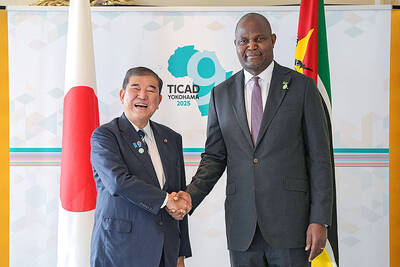
An attempt to promote friendship between Japan and countries in Africa has transformed into a xenophobic row about migration after inaccurate media reports suggested the scheme would lead to a “flood of immigrants.” The controversy erupted after the Japan International Cooperation Agency, or JICA, said this month it had designated four Japanese cities as “Africa hometowns” for partner countries in Africa: Mozambique, Nigeria, Ghana and Tanzania. The program, announced at the end of an international conference on African development in Yokohama, will involve personnel exchanges and events to foster closer ties between the four regional Japanese cities — Imabari, Kisarazu, Sanjo and

By 1971, heroin and opium use among US troops fighting in Vietnam had reached epidemic proportions, with 42 percent of American servicemen saying they’d tried opioids at least once and around 20 percent claiming some level of addiction, according to the US Department of Defense. Though heroin use by US troops has been little discussed in the context of Taiwan, these and other drugs — produced in part by rogue Chinese Nationalist Party (KMT) armies then in Thailand and Myanmar — also spread to US military bases on the island, where soldiers were often stoned or high. American military policeman